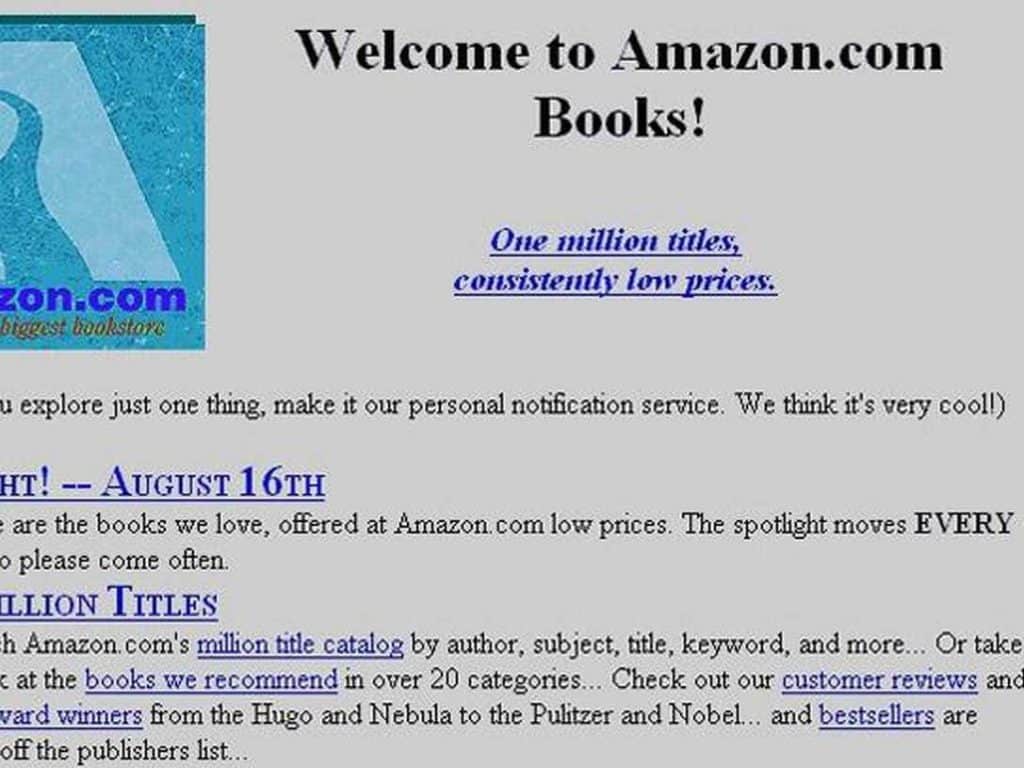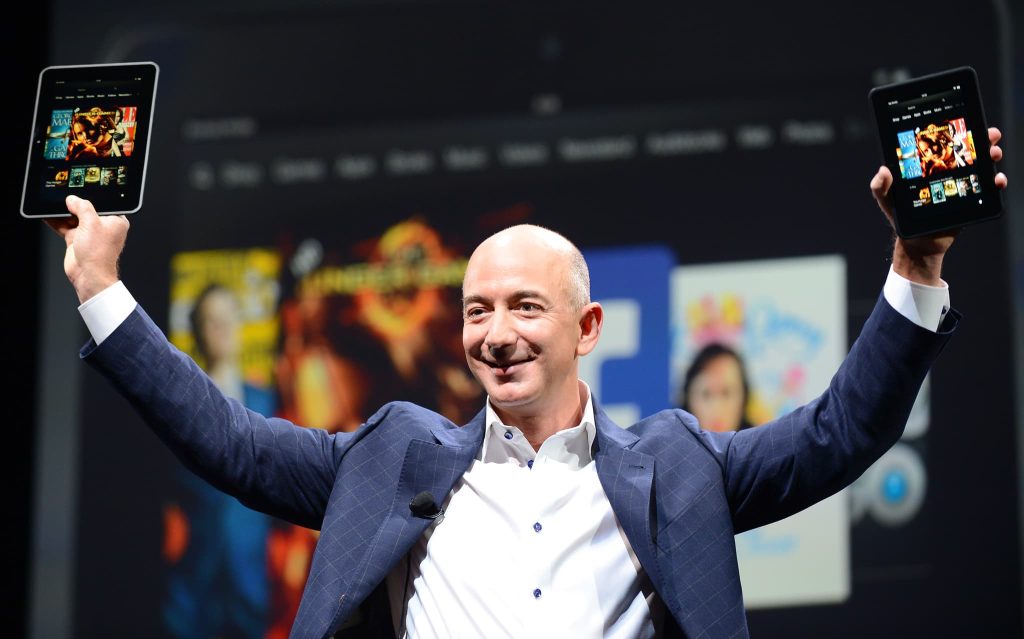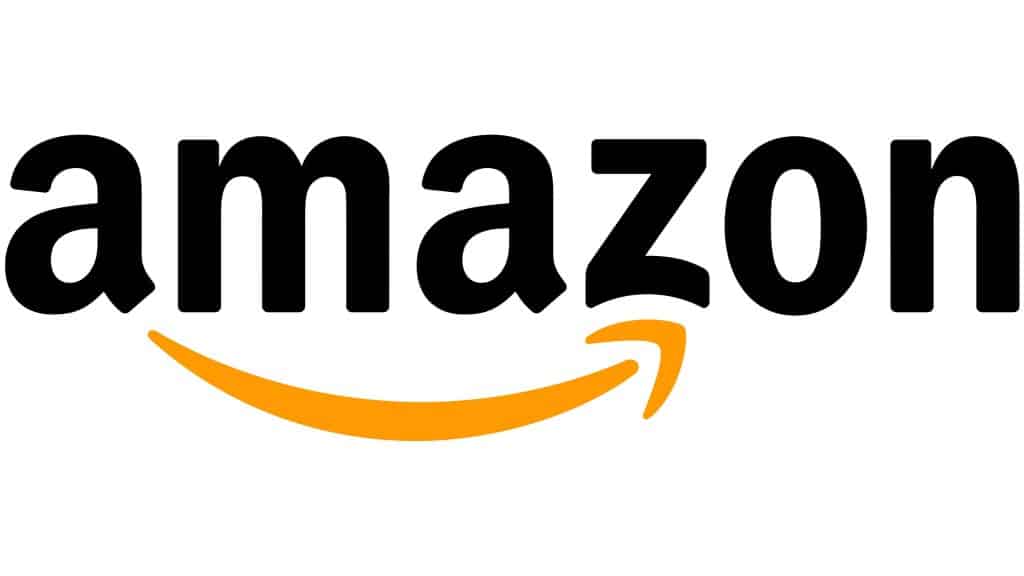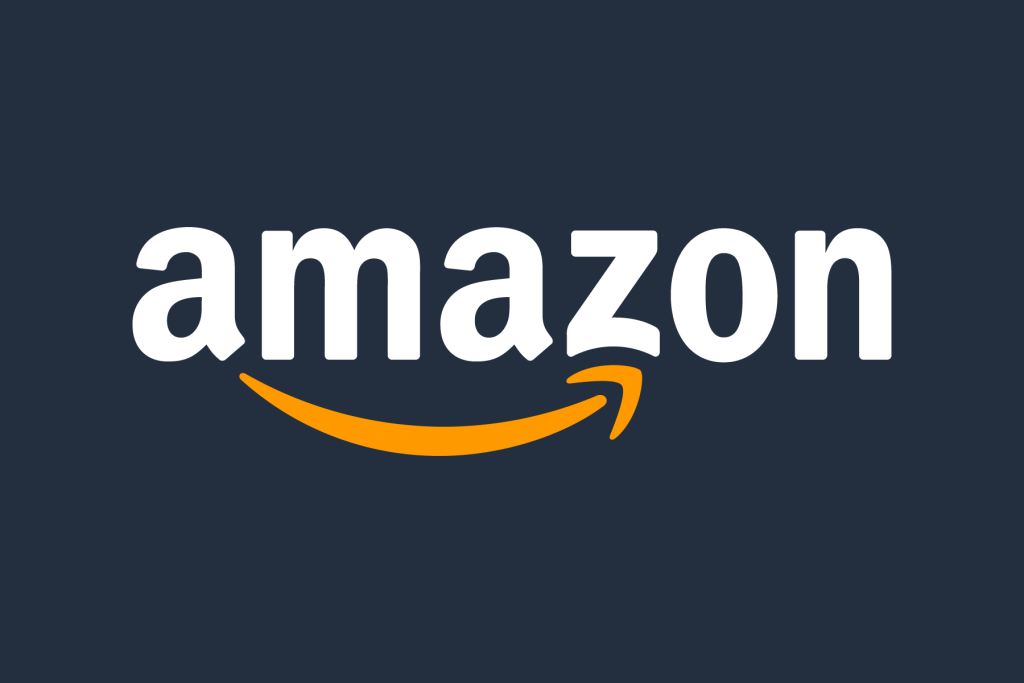
When it comes to online sales there is one company that consistently stands out from its competition. We probably don’t need to tell you what company we’re referring to but in case you haven’t guessed Amazon yet, well Amazon is that company.
You know Amazon as your go-to marketplace for groceries, wellness products, clothing, e-books, or even television shows but even all those things don’t begin to scratch the surface of what Amazon offers.
There’s a reason why shoppers visit Amazon consistently and it’s not only because shoppers can buy anything under the sun in a single purchase. What keeps shoppers coming back is that Amazon is a brand consumers trust and what built that brand awareness is a logo that is recognizable worldwide.
Read on below to learn how Amazon’s logo helped make their business skyrocket.
Meet Amazon

Before there was Amazon, there was just a Princeton student who thought he wanted to graduate with a degree in physics or math. Then one day he was assigned an equation that he couldn’t solve after spending three hours trying to work through it. When a peer worked through the problem with no problem, that student decided to instead major in electrical engineering and computer science. That student was Jeff Bezos.
Bezos was born on January 12, 1964, and while he graduated from Princeton in 1986, he didn’t start Amazon until 1995. If Bezos never struggled through that one equation though, Amazon would have never been conceptualized.
To launch his company, Bezos’ parents invested $250,000, and it was an investment that has paid off. Today, Amazon offers over 175 services ranging from retail products, streaming services, delivery services, grocery products, music, Amazon Drive, Alexa, and so much more.
Amazon’s Evolution
1994-1995: The foundation is set for Amazon’s launch
When Amazon first launched, it launched as an online bookstore with a headquarters in Seattle, Washington. Bezos chose this location because there was a lack of sales tax in the state, so Amazon could essentially not have to collect, or charge, their customer’s sales tax. The name Amazon came from the “Amazon River” which is the largest river in the world and symbolized how Bezos dreamed of Amazon becoming the largest bookstore in the world. He also looked for names that started with the letter “A” so that his company would be found first on alphabetized lists.
To fund the launch which formally happened in 1995, Bezos took his parent’s investment along with $10,000 of his own money. In these early days, Bezos employed a small staff, in addition to him and his wife, and operated Amazon out of his garage in his rented home in Bellevue, Washington.
In just two months since its launch, Amazon took off and was selling books in almost 50 countries and saw $20,000 a week in sales.
1997: Amazon goes public
Amazon’s sales flourished and in 1997 the company went public with a $300 million valuation at $1.96 per share.
1999: Amazon expands to allow third-party sellers
As Amazon continued to expand, it decided to tackle a new business venture that was foreign to fellow e-commerce companies currently in business. This new venture consisted of Amazon allowing third-party sellers to sell their merchandise through Amazon’s site. This was a concept that took off and in the first four months of offering this, more than 250,000 customers purchased a third-party item on Amazon.
2005: Amazon Prime is launched
What Amazon didn’t have until 2005 was a customer loyalty program. That all changed during an earnings call though when Bezos announced his plans to implement one. He announced that Amazon Prime would consist of free two-day shipping, in addition to other benefits, at the cost of $79 per year.
2015: Amazon offers more
The development of Amazon’s Echo (and Alexa products) first began in 2011, but the products were not formally sold until June 2015. Having an in-home virtual assistant was a new concept for consumers, but it was a concept that took off. The most popular version was the Echo Dot, and Amazon expanded to link their Alexa software to smart home devices and focused on regularly updating Alexa to be able to do more.
Today: Amazon continues to be a force to be reckoned with
Since Amazon first launched in 1995, their success has spoken for itself. Today, Amazon is one of the most influential companies in the world and Amazon has grown to become a massive e-commerce corporation that touches upon almost anything and everything. That includes their Amazon Prime program which today has more than 112 million Prime members across the world.
Roadblocks Along the Way
When you are a successful company, it’s impossible to stay clear of the competition. Amazon has been subject to competitors entering the space, whether it’s competitors that sell similar items in a similar marketplace style or competitors who are creating similar software or services. In addition to the increased competition, the company has faced some lawsuits over the years, particularly after going public from companies like Barnes and Noble and Walmart. Amazon always seems to be ahead of its competition though and has still been able to have impressive sales quarter after quarter.
The Meaning of Amazon’s Logo and Amazon’s Logo History:
When it came to crafting a logo for Amazon, Bezos needed a logo that conveyed how Amazon is set up to be a trendsetter in everything from “A to Z.”
Even in the early versions of Amazon’s logo, the design was always minimalist because Bezos never wanted to allocate a significant amount of money to branding. Even with a smaller branding budget though, Amazon’s logo is one of the most widely recognizable logos in the world.
Below we take a deeper dive into the different versions of this logo.

1995-1997: The first version of the Amazon logo
This first iteration was designed by Turner Duckworth. Turner opted for a bold letter “A” that featured a vertical white line, symbolizing the Amazon River. Underneath the design, Turner included the “amazon.com” wordmark for easy identification.
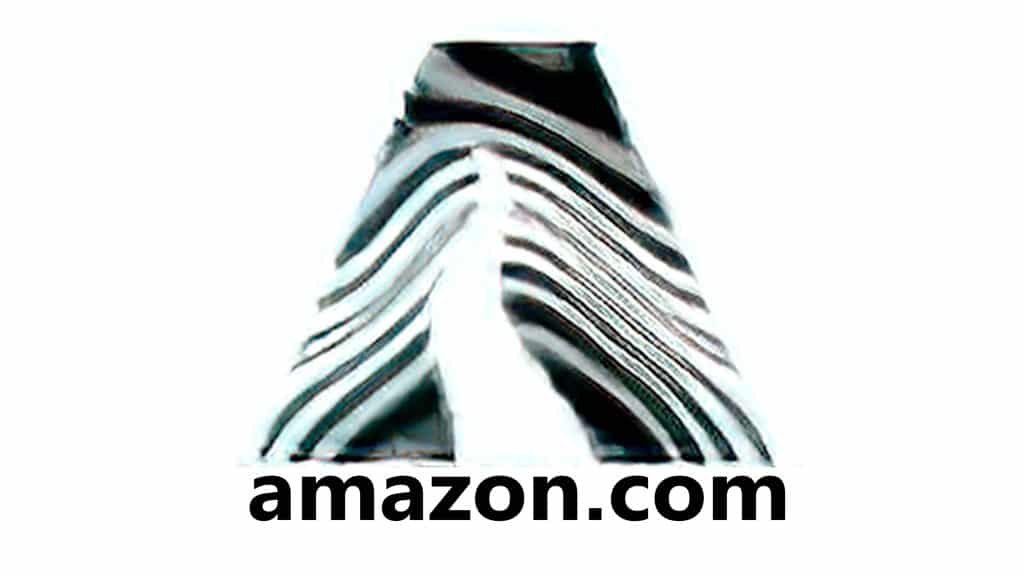
1997-1998: The second version of the Amazon logo
In this iteration, the same prominent “A” was featured, however, this version included multiple white horizontal lines that come out of the solid, white vertical line that symbolized the river. The addition of these lines resembles not only a river, but also a tree and a zebra, making the logo unique. Like the first version, this included the “amazon.com” wordmark and was in a monochromatic color scheme.

1998 – 2000: The third version of the Amazon logo
Before finalizing the third logo, Amazon went through a series of logos over the course of one year (1998) which they tested out. All three took away the bold “A” symbol displayed in the prior logos. This first logo they tested out simply said “amazon.com” with “Earth’s Biggest Bookstore” beneath it. Both fonts were in a serif typeface and the only colors used were black and white.

The second logo Amazon tested out that year included the addition of a new color, yellow. The logo read “Amazon.com” however the letter “O” was in yellow and enlarged. “Earth’s Biggest Bookstore” was removed from this version.
The final logo Amazon tested in 1998 stayed with the company until 2000. This was a simple logo, like the past versions, and featured all lowercase letters with a bright yellow/orange “swish” line under the wordmark. The line was slightly curved to symbolize bringing together the past and future. This font was also Officina Sans, which was the first time an Amazon logo used this.
2000 – Today: The fourth version of the Amazon logo
The logo that was developed in 2000 is the logo we know and love today. This iteration removed the “.com” and instead only kept the word “Amazon.” The text was all lowercase and featured a yellow/orange arrow that connected the “A” to the “Z,” essentially forming a smile. This symbolized that Amazon sells everything from “A to Z,” which was fitting now that Amazon sells more than only books.
In 2012, the logo was revisited by Turner Duckworth to add slightly playful and friendly touches to evoke feelings of reliability and happiness, which the Amazon brand embodies.
Amazon Prime Logo
Under the Amazon umbrella, is Amazon Prime. This logo features the classic elements the greater Amazon logo includes, but the word “Prime” was added and touches were updated, like the blue coloring, to evoke quickness, excellence, and even more friendliness.
Amazon’s logo font:
The font Amazon uses for its logo is a custom designed Officina Sans Bold typeface. This typeface was designed specifically for the brand and was based on similar fonts like PF Das Grotesk Pro Bold and Grotesco Bold. What makes this unique font stand out are the smooth arches and lines, and slightly curved line ends, which together make for a clean typeface.
Amazon’s logo color:
When choosing a logo color, Amazon was always looking for a color that would represent friendliness, speed, and reliability. Beyond opting for black and a yellow/orange in their logo, they branched off in the coloring for the Prime logo. Blue is a color that represents these features as well, so Amazon opted for blue to be the color of Prime.
Amazon’s logo symbols:
Amazon’s logo doesn’t feature many symbols outside of the typeface. The symbols that are included though, are intentional.
The first symbol is the arrow underneath the company name. What is particularly symbolic about the arrow is where it starts and stops. It begins under the “A” and ends under the “Z” symbolizing that Amazon offers everything from “A to Z” and that the company can respond to any one of its customer’s needs. If you go a little deeper, the arrow could also depict how Amazon delivers goods to consumers or how the company looks at innovative solutions (as depicted by their innovative logo).
If you look closer at the arrow, you’ll also notice that it forms a smile. This bold smile signifies the company’s friendliness and the overall mood of their brand. Amazon’s mission is to make its customers happy so having the smile be in orange and the letters be in black signify that while Amazon is a professional business, it will always be one where the customers come first.
Amazon Today
In just a couple of decades, Amazon has transformed the e-commerce world. Beyond selling products, Amazon has also been a leader in launching new technologies.
Today, Amazon is worth more than $1.7 trillion. While Bezos stepped down as CEO, his 11% share in the business has landed him to be the first person in history to be worth more than $200 billion. Given Amazon’s past track record, it doesn’t seem like Amazon will be slowing down any time soon.
Lessons Learned from Amazon
Amazon’s greatest teachable lesson is brand awareness. Anyone you meet with surely knows of Amazon and can recognize the logo – children included! Packages arrive on doorsteps every day and what keeps customers buying more, is that it is a brand that delivers on its promise. And that is a promise that is made clear by their logo.
What has made Amazon so recognizable is its product placement. They put their logo on their packaging, on their trucks, and everywhere they can so that when you receive an Amazon package, anyone can see that it is from there.
What their logo shows is that logos don’t need to include a lot of glitz and glamour. A logo can be stylistically simple, but if the product placement is good, it’ll become recognizable.
As you begin to develop your company’s logo, you’ll likely have to decide on countless decisions, and these decisions may be outside of your comfort zone. At Hatchwise though, you never have to worry about your logo design.
Once you start a logo contest, our team of creative professionals will begin to send you various designs for you to pick from. All you have to do is relax, sit back, and wait for them to come in.
To get started, just get in touch with a member of our team today! They’ll answer all your questions and help you launch your logo contest



